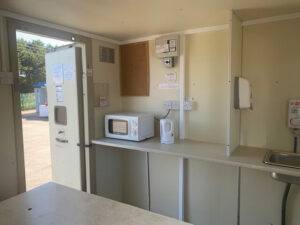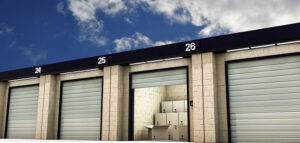Storage containers and modular buildings are two distinct solutions that cater to different needs and applications. While both offer unique advantages in terms of versatility and efficiency, they serve fundamentally different purposes and are constructed using diverse methods. This blog delves into the key differences between these solutions, highlighting their uses, construction, and benefits.
What Is A Storage Container?
A storage container, commonly made from steel, is primarily designed for transporting and storing goods. Originating from the shipping industry, these containers are built to be durable, weather-resistant, and secure. They come in standard sizes, with the most common dimensions being 20 feet and 40 feet in length. Due to their robustness and portability, storage containers have been repurposed across various sectors, not only for storage but also as makeshift offices or temporary workspaces. However, their primary function remains the storage of items in a secure environment.
What Is A Modular Building?
These are prefabricated structures that are constructed in sections or modules. These modules are assembled in a factory setting and are then transported to the building site, where they are pieced together to form a complete structure. Modular buildings can be used for a wide range of permanent or temporary applications, including schools, offices, hospitals, and homes. The construction process of modular buildings allows for much more design flexibility compared to storage containers, as modules can be customised to meet specific architectural and functional requirements.
The Key Differences
The main difference between storage containers and modular buildings lies in their intended use and construction. Storage containers are inherently limited by their linear, box-like structure, which makes them suitable for straightforward storage or basic living spaces without much customisation. In contrast, modular buildings are usually designed from the outset as habitable spaces, equipped with insulation, electrical systems, and plumbing. This makes them immediately suitable for residential or commercial use.
Another significant difference is in their flexibility and scalability. Modular buildings can be easily expanded or reconfigured by adding or removing modules. This makes them particularly appealing for growing businesses or temporary facilities that need to adapt to changing circumstances. Storage containers, while stackable, do not offer the same level of customisation or scalability.
Choose Heaver Brothers For Modular Buildings & Storage Containers
While both storage containers and modular buildings offer quick, cost-effective solutions for space management, they cater to distinctly different needs. If you’re looking to purchase one, look no further than Heaver Brothers. We stock a selection of solutions that are sure to meet your needs.



